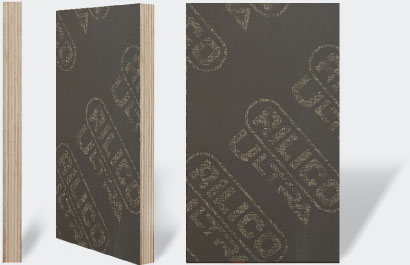Film faced plywood is a type of plywood that is coated with a protective film on both sides, typically made of phenolic or melamine resin. This film serves as a barrier against moisture, chemicals, and physical damage, making film faced plywood highly durable and long-lasting. In this section, we will compare film faced plywood to traditional plywood, focusing on their features and functions.
One of the key differences between film faced plywood and traditional plywood is their resistance to external elements. Traditional plywood is prone to damage from moisture, UV rays, and abrasions, which can lead to warping, swelling, and rotting over time. In contrast, film faced plywood is designed to withstand these environmental factors, making it ideal for outdoor applications such as concrete formwork, landscaping, and marine construction.
Another important feature of film faced plywood is its smooth and non-porous surface. The film coating on film faced plywood creates a flat and uniform surface that is easy to clean and maintain. This makes it ideal for use in applications where hygiene and cleanliness are crucial, such as food processing plants, pharmaceutical laboratories, and hospital environments. In comparison, traditional plywood may have rough and uneven surfaces that can harbor dirt, bacteria, and other contaminants.

In terms of strength and durability, film faced plywood is generally more resilient than traditional plywood. The film coating adds an extra layer of protection against impact, abrasion, and wear, increasing the overall structural integrity of the plywood. This makes film faced plywood suitable for heavy-duty applications such as truck flooring, scaffolding panels, and industrial shelving. Traditional plywood, while still strong and versatile, may not offer the same level of protection and longevity as film faced plywood.
One of the key functions of film faced plywood is its ability to provide a smooth and uniform surface for concrete forming. The film coating helps to release the concrete easily after it has set, resulting in a high-quality finish with minimal imperfections. This makes film faced plywood a popular choice for construction projects such as building foundations, retaining walls, and bridge decks. Traditional plywood, on the other hand, may require additional treatment or preparation to achieve the same level of smoothness and adhesion.
In summary, film faced plywood offers several advantages over traditional plywood when it comes to durability, resistance to external elements, ease of maintenance, and strength. Its smooth and non-porous surface makes it suitable for a wide range of applications where hygiene and cleanliness are critical. The added protection provided by the film coating makes film faced plywood a reliable choice for heavy-duty and outdoor projects. While traditional plywood still has its own uses and benefits, film faced plywood stands out as a superior option for demanding environments and applications.
